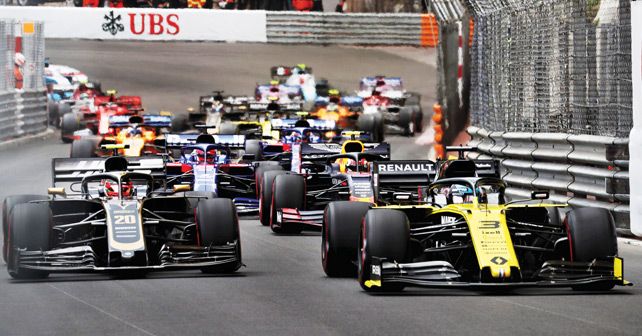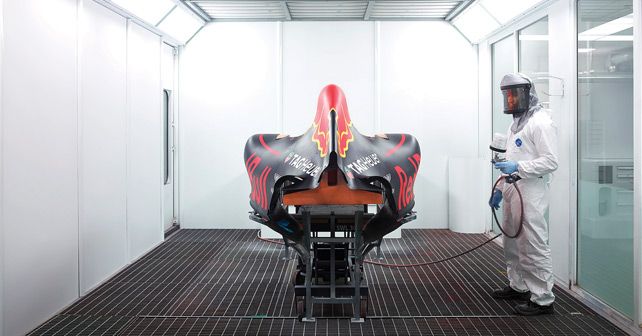An analysis of the budget cap for Formula 1 teams
F1 teams have finally agreed to a budget cap. So, may the cleverest team win… Getting the people in Formula 1 to agree to anything is a very difficult task. Bernie Ecclestone found ways of forcing teams to do what he wanted

F1 teams have finally agreed to a budget cap. So, may the cleverest team win…
Getting the people in Formula 1 to agree to anything is a very difficult task. Bernie Ecclestone found ways of forcing teams to do what he wanted them to do – often with the help of FIA President Max Mosley. But this created an atmosphere of mistrust and conflict that was a theme for more than 30 years. Changing attitudes is very difficult to do in such a circumstance, but Liberty Media’s Chase Carey set out trying to do exactly that – to reform the sport with the competitors working together for the common good.
Some laugh at such an idea, but there’s no reason that it can’t happen, particularly if one looks at the way a series such as NASCAR operates. Today, the same is true of IndyCar as well. The teams are competing fiercely on the track, but they work together to improve the sport. Carey has found this process to be something of a grind, with the ground shifting sometimes when he’s not expecting it to. This is not like any other business. But, finally, we have an agreement on the budget cap, which has been agreed to on the basis that the sporting and technical regulations would be delayed. To get an agreement, the smaller teams insisted on the budget cap being signed off. It was a classic piece of horse-trading, but finally it’s a good thing.
The resulting budget cap is not perfect for anyone. The big teams say it is too low, the small teams say it’s too high. But it’s there and it’s there without a glide path, which means that it’ll come into force in 2021 and won’t be introduced gradually. This is a good thing. The downside is that there are significant exclusions from the budget cap. The budgets will end up being around $245 million all told. In addition to the driver and highest-paid executive salaries, the cap will also not include engine bills, marketing and hospitality costs, depreciation and race weekend travel and accommodation. All of this adds up to around $70 million, although it’ll be more for some teams and less for others. Nonetheless, there’s also the possibility that, once the concept of a capped budget exists, it can be reduced further in future. And manufacturers will understand that to win on a limited budget is something that gives them MORE credibility than winning without a budget cap. It’ll show that they are cost-effective – or, to put it another way, clever. It was similar with crash-testing in the passenger vehicle space. The manufacturers were all opposed to the idea until it became the norm, at which point they turned it into a marketing tool, as a high crash-test rating made cars more easy to sell.

When all is said and done, the key question is whether or not having a budget cap will make the teams cost-neutral and consequently put value into such organisations – which is the ultimate goal. With such a high budget cap, this is still very difficult because Liberty Media will likely only provide teams with an average of about $80 million a year in revenues. This is a big improvement for some teams, but it’s still only 45% of the budget cap, and 33% of what the real budget will be for the top teams, which means that they’ll still have to find $165 million a year.
If they could agree to go racing for less, which is quite possible, while retaining all the key elements that make F1 unique, then they would put value into their teams and more manufacturers would want to get involved because F1’s marketing power would be free and the costs of involvement would be repaid.
One might ask whether this is even possible, but there’s no reason why F1 teams couldn’t operate on $80 million if they wanted to. It’s a pretty significant sum of money and while there would need to be cuts in spending, resulting in layoffs, the expertise that is currently locked into the big teams would be spread across the business, which would raise the level of the rival teams. Or, at least, that’s the theory. You can understand why the big teams want to retain their financial advantages, but, in the overall scheme of things, a much lower budget cap would be better.
The good news is that the bosses of the big car manufacturers will eventually understand that if they’re best then they can do the job for less money – and so they’ll push for their own teams to spend less. This may ultimately push down the budgets. Of course, that’ll involve teams having confidence in their own abilities, which is often true in the midfield but rarely at the front of the grid. When all is said and done, winning in F1 should always be difficult. Beating the best of the best shouldn’t be easy, but the sport – and all the organisations involved – would be much better off if budgets are reduced and participating in F1 becomes more financially viable in future.
Also read - The curious case of the F1 calendar
Formula 1: A view from the other side
Joe Saward has been covering. Formula 1 full-time for 30 years. He has not missed a race since 1988.


-(1).webp)

-(1).webp)














Write your Comment on